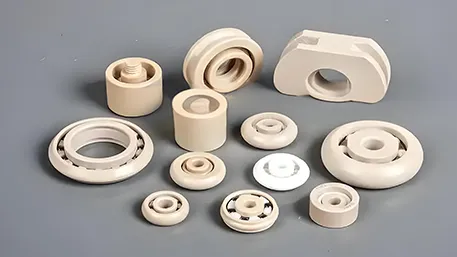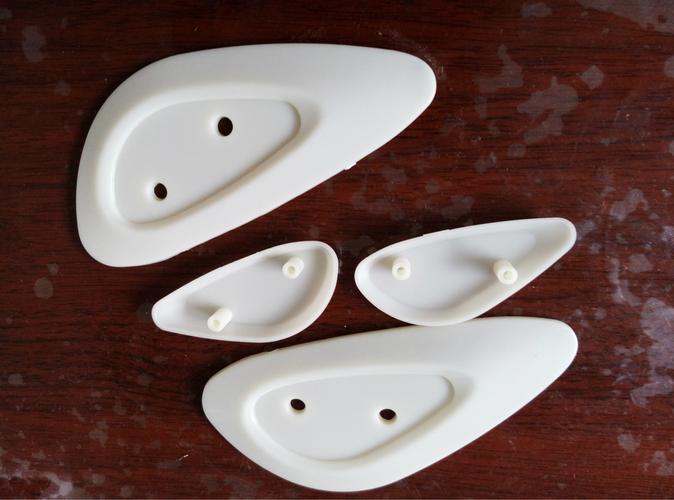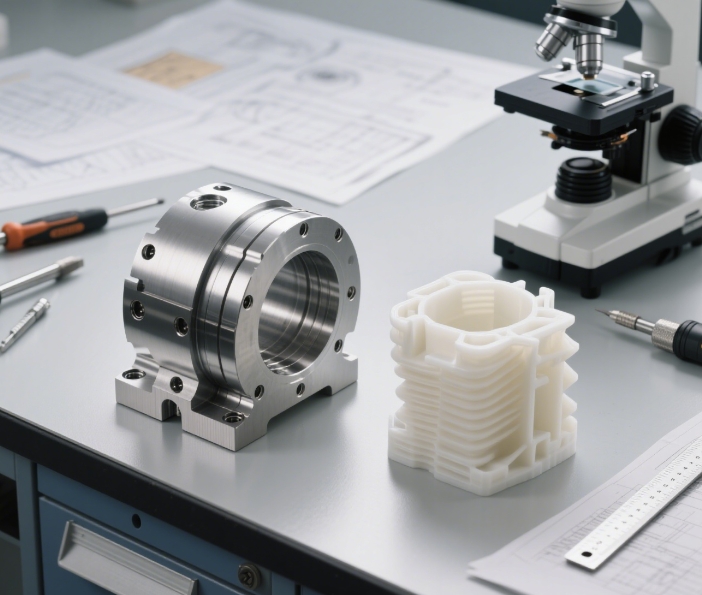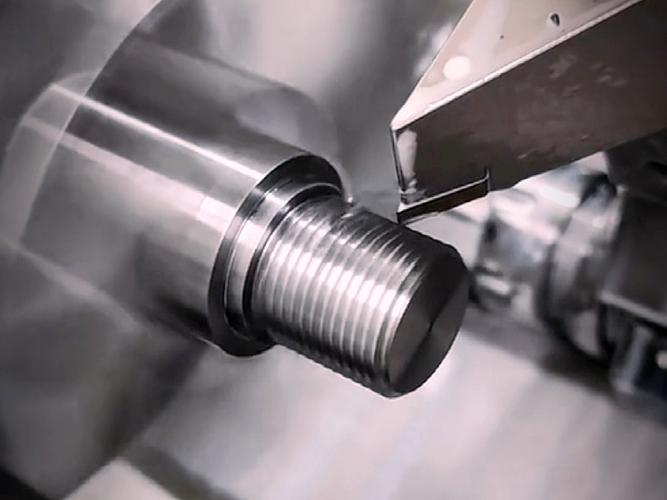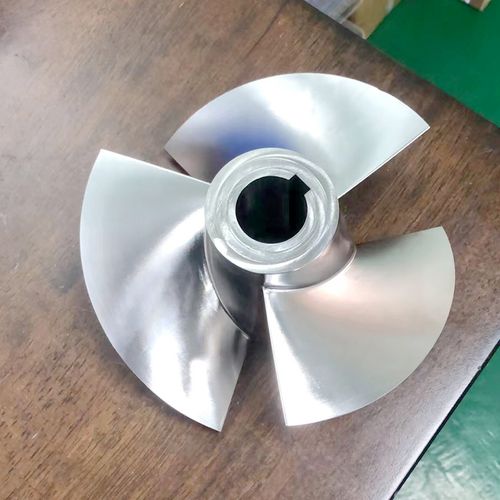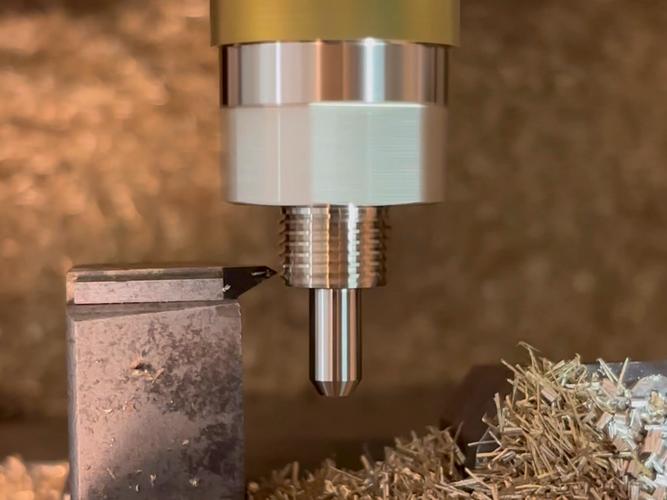
Answer
Brass is generally more suitable for machining than bronze. Brass has a lower hardness (e.g., C36000 has a hardness of 63 – 126 HB), and lead – containing grades (such as C36000 with 2.5 – 3.7% lead) have self – lubrication properties, enabling high – speed cutting (the cutting speed of carbide tools can reach 2000 SFM), and the surface finish can reach Ra ≤ 1.6 μm. Its chips are short and easy to handle, not likely to clog the tool, and the machining efficiency is high. In contrast, bronze (such as tin bronze with a hardness of 80 – 250 HB), due to elements like tin, has a higher hardness and lower thermal conductivity (about 24 – 108 W/(m·K)). The cutting speed needs to be reduced (usually 30 – 50% lower than that of brass), and more wear – resistant tools are required, resulting in a higher processing cost. However, bronze is irreplaceable in scenarios requiring high strength and corrosion resistance (such as bearings, ship components), and a trade – off needs to be made according to specific requirements.
Extended Answer
I. Material Characteristics and Machining Basics
Differences in Composition and Performance Differentiation
Brass: It is mainly a copper – zinc alloy with a zinc content of 5 – 45%, and lead (1.5 – 3.7%) is often added to improve cutting performance. A typical grade like C36000 (free – cutting brass) has a hardness of 63 – 126 HB, a tensile strength of 338 – 469 MPa, and a thermal conductivity of 115 W/(m·K), making it one of the copper alloys with the best machining performance.
Bronze: It is mainly a copper – tin alloy (tin content of 5 – 12%), and elements such as aluminum and phosphorus are often added. For example, tin bronze has a hardness of 80 – 250 HB, a tensile strength of 200 – 600 MPa, and a thermal conductivity of 24 – 108 W/(m·K). Its strength and corrosion resistance are significantly better than those of brass, but it is more difficult to machine.
Comparison of Mechanical Properties
Hardness and Strength: The average hardness of bronze is 30 – 50% higher than that of brass. For example, C36000 has a hardness of 63 – 126 HB, while tin bronze C93200 has a hardness of 100 – 150 HB. The high hardness of bronze leads to faster tool wear during machining, and carbide or PCD tools need to be used.
Ductility and Toughness: Brass has excellent ductility (e.g., C26000 has an elongation of 30%) and is suitable for cold forming; bronze has better toughness and is suitable for withstanding impact loads, but it is prone to work – hardening during machining.
Thermal Conductivity and Lubrication Characteristics
The thermal conductivity of brass is 1.5 – 3 times that of bronze. During machining, heat is easily dissipated, which can reduce tool overheating. The lead particles in lead – containing brass can form a lubricating film at the cutting interface, reducing the friction coefficient (μ≈0.15), while bronze depends on external lubrication.
II. Machining Parameters and Process Optimization
Tool Selection and Lifespan
Brass Machining:
Preferentially use coated carbide tools (such as TiN, DLC coatings). The cutting speed can reach 1500 – 2000 SFM, and the tool lifespan is 3 – 5 times higher than that of high – speed steel (HSS).
Geometric parameters: A positive rake angle of 8 – 15° and a sharp cutting edge to reduce cutting force; for threading tools, use a 60° thread profile angle and design a chip – breaking groove.
Bronze Machining:
Ultra – fine – grained carbide or PCD tools are required. The cutting speed is reduced to 500 – 800 SFM, and the feed rate is decreased by 20 – 30%.
Geometric parameters: A negative rake angle (-5° to – 10°) to enhance tool rigidity and reduce the risk of chipping.
Range of Cutting Parameters
Turning:
Brass: 300 – 900 SFM (carbide), feed rate of 0.05 – 0.15 mm/rev, depth of cut 2 – 5× feed rate.
Bronze: 100 – 300 SFM (carbide), feed rate of 0.03 – 0.10 mm/rev, and layer – by – layer cutting is required to avoid overheating.
Milling:
Brass: 200 – 600 SFM, feed per tooth of 0.03 – 0.12 mm, axial depth of cut of 0.5 – 6 mm.
Bronze: 80 – 200 SFM, feed per tooth of 0.02 – 0.08 mm, and climb milling is recommended to reduce burrs.
Drilling:
Brass: Use a standard 118° twist drill, 150 – 400 SFM, and peck – drilling (retract the drill every 5 times the diameter) is required for deep holes.
Bronze: Use carbide drill bits, 80 – 150 SFM, feed rate of 0.02 – 0.06 mm/rev, and high – pressure cooling (5 – 10 MPa) is recommended.
Cooling and Lubrication Strategies
Brass: A water – soluble emulsion (5 – 10% concentration) can effectively reduce the cutting temperature, and mineral oil can be used for deep – hole machining to improve the surface quality.
Bronze: Extreme – pressure (EP) cutting oil or synthetic ester – based lubricants are required to inhibit oxidation and reduce tool wear. High – pressure cooling (10 – 20 MPa) can significantly improve chip removal.
III. Typical Challenges and Solutions
Built – up Edge (BUE) and Surface Quality
Brass:
Cause: Material adheres to the tool during high – speed cutting.
Countermeasure: Increase the cutting speed to over 1000 SFM, or use PVD – coated tools (such as TiAlN) to reduce friction.
Bronze:
Cause: Work – hardening leads to material accumulation.
Countermeasure: Adopt cryogenic cooling (below – 20°C) or liquid nitrogen spraying to inhibit work – hardening.
Long Chip Entanglement and Chip – breaking
Brass:
Chips are short and brittle, usually no special treatment is required. If long chips appear, adjust the feed rate to 0.1 – 0.2 mm/rev or use a tool with a chip – breaking groove.
Bronze:
Continuous ribbon – like chips are likely to be produced. It is necessary to optimize the tool geometry (such as a serrated cutting edge) or reduce the feed rate to below 0.05 mm/rev.
Work – hardening and Deformation Control
Brass: The cold – working hardening rate is relatively low (about 15 – 20%), and plasticity can be restored by annealing (260 – 320°C).
Bronze: Work – hardening is significant (hardening rate of 30 – 40%). It is necessary to carry out staged machining and cooperate with intermediate annealing (500 – 600°C) to avoid cracking caused by stress concentration.
IV. Cost and Application Scenario Comparison
Material Cost
The price of brass is about $2.5 – $4.0/kg, and that of bronze is about $4.0 – $8.0/kg (tin bronze), mainly because the price of tin is higher than that of zinc.
Processing Cost: Bronze has fast tool wear and long processing time, and the comprehensive cost is 20 – 40% higher than that of brass.
Application Scenario Selection
Preferentially Choose Brass:
Parts requiring high precision and high surface quality (such as electronic connectors, musical instruments).
Structural parts for low – cost, high – volume production (such as valves, pipe fittings).
Preferentially Choose Bronze:
High – load, wear – resistant parts (such as bearings, gears).
Corrosion – resistant environments (such as ship propellers, chemical equipment).
V. Environmental Protection and Sustainable Development Trends
Development of Lead – free Brass
The EU’s RoHS directive promotes the application of lead – free brass (such as C69300). Its hardness is 100 – 130 HB, and the cutting speed needs to be reduced by 10 – 15%, but performance can be compensated by adding elements such as bismuth and silicon.
Case: By optimizing the tool rake angle (8°) and feed rate (0.25 mm/rev), the machining efficiency of lead – free brass CW511L is close to that of traditional lead – containing brass.
Green Manufacturing of Bronze
Bronze is produced using recycled copper (waste copper recovery rate > 97%), and energy consumption is reduced by 62% compared to primary copper.
Surface treatment technology: Ni – P – TiO₂ nano – composite coating replaces the chromium – containing process, providing salt – spray corrosion protection for over 1000 hours.
VI. Comparison with Other Materials
Comparison with Steel
The machinability index of brass is 100%, while that of steel is only 20%. For example, for 45 – steel (hardness 200 HB), the cutting speed is only 50 – 200 SFM, and the tool lifespan is short.
Bronze has a strength close to that of medium – carbon steel but better corrosion resistance, making it suitable for marine engineering.
Comparison with Aluminum Alloy
The thermal conductivity of brass (115 W/(m·K)) is half that of aluminum alloy (200 – 237 W/(m·K)), but it has better anti – tool – sticking performance and is suitable for machining complex shapes.
The hardness of bronze is 2 – 3 times that of aluminum alloy (30 – 100 HB), making it suitable for high – wear – resistance scenarios.
VII. Future Technological Development Directions
Intelligent Machining
Machine learning to optimize cutting parameters: For example, a prediction model can increase the machining efficiency of bronze by 50%.
Robot automation: Collaborative robots (cobots) combined with force sensors can achieve high – precision deburring with an accuracy of 99.9%.
New Material Research and Development
Graphene – enhanced bronze: The tensile strength is increased by 30%, and the thermal conductivity is increased by 20%, which is suitable for high – end heat – dissipation components.
High – strength lead – free brass: Hardness of 120 – 150 HB, lead content < 0.5%, and machining performance close to that of C36000.
Process Innovation
Selective laser melting (SLM): Self – lubricating bronze containing 5% graphite can be prepared, and the friction coefficient is reduced to 0.12.
Cryogenic machining: Liquid nitrogen cooling (-196°C) significantly reduces the cutting force of bronze and extends the tool lifespan by more than 3 times.
In summary, brass has significant advantages in machining efficiency, cost, and surface quality, making it the preferred choice for most conventional scenarios; bronze, with its high strength, corrosion resistance, and wear resistance, is irreplaceable in specific industrial fields. In the future, with the improvement of environmental protection requirements and technological progress, lead – free brass and high – performance bronze will further expand their application boundaries, and intelligent machining technologies will continuously optimize the machining efficiency of both.

